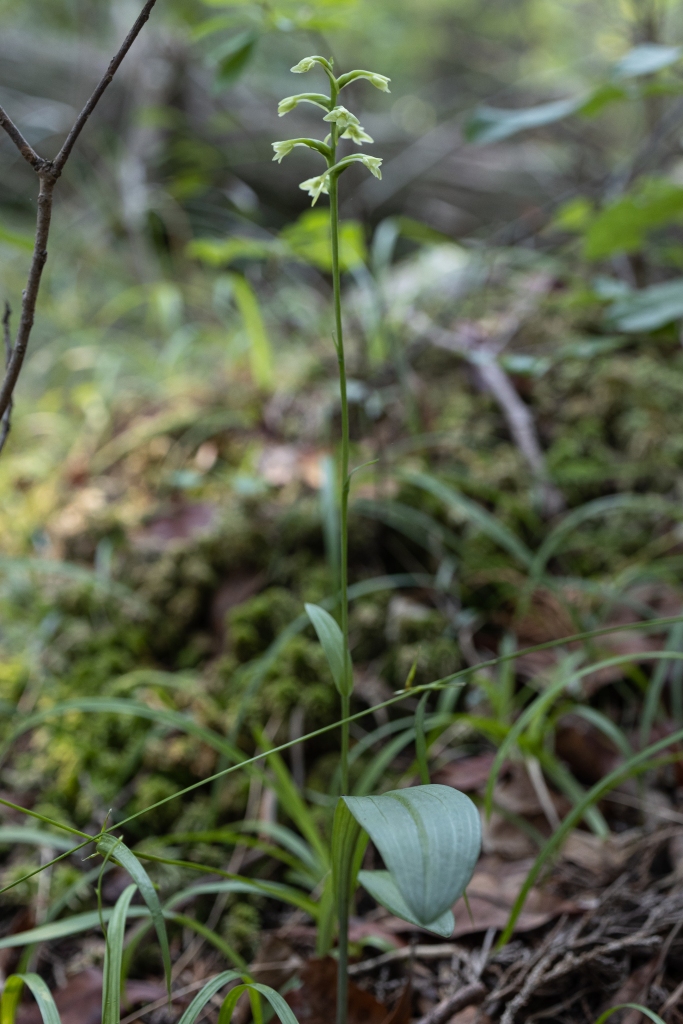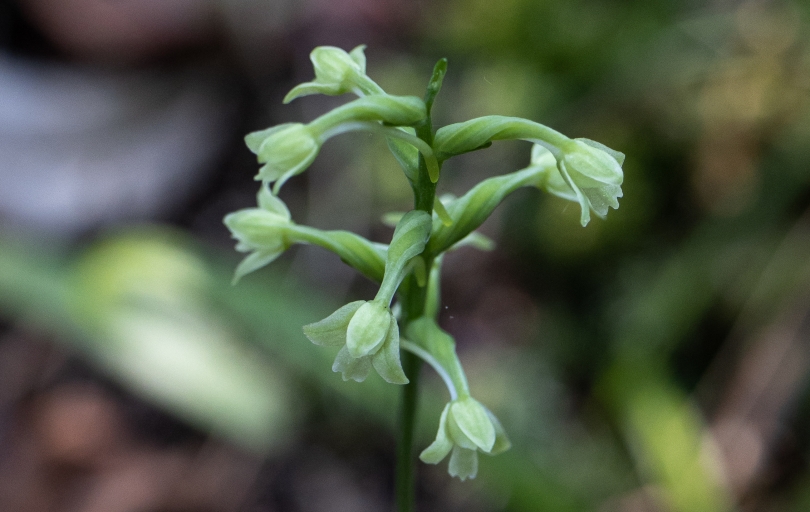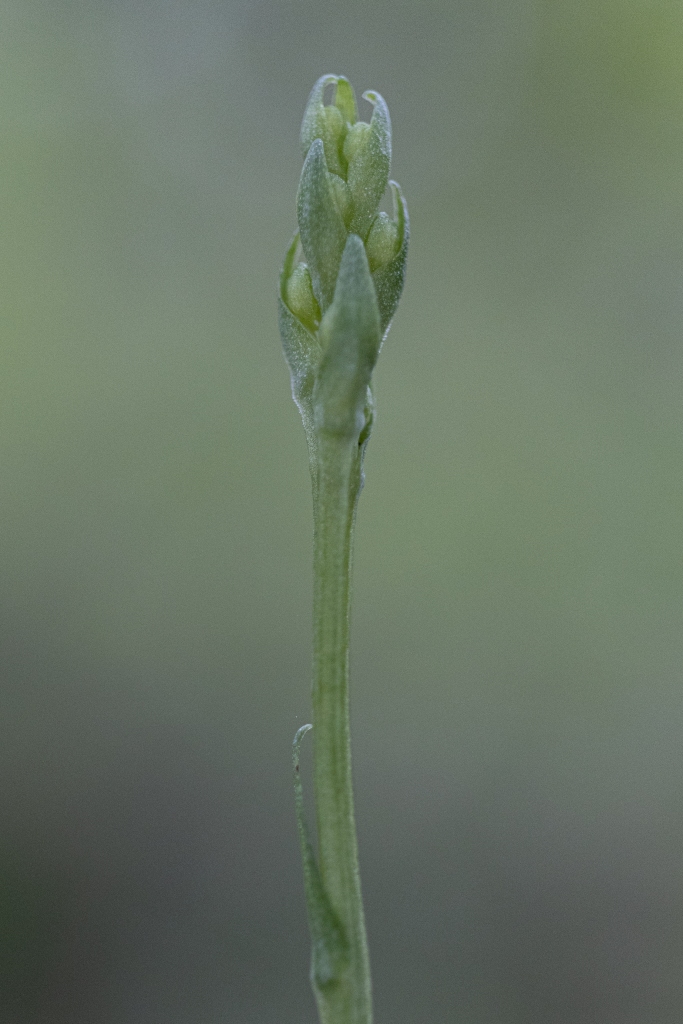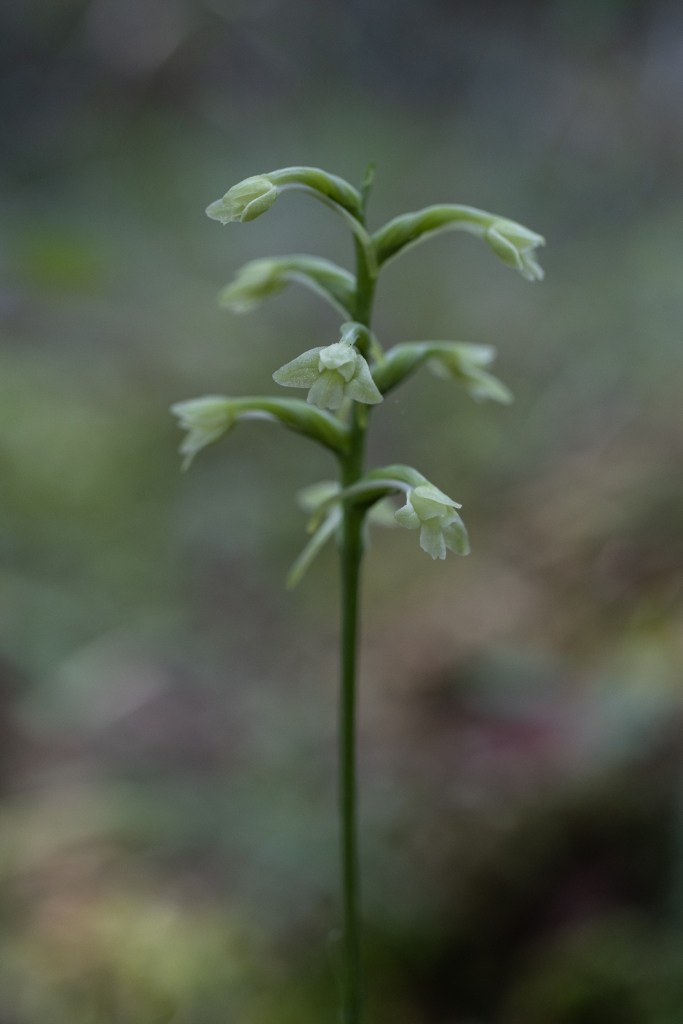
A less showy cousin of the much larger and showier white-fringed orchid (they were growing near each other in pinelands of New Jersey.) The plant has but one large leaves with others being reduced to bracts along its stems. This particular plant was a youngling that was probably flowering for the first time.
There is some controversy regarding its inclusion into the Platanthera genus. I do not know enough about the morphology of the genus to elaborate further.
The spot I found this orchid seemed to have a healthy population of orchids that were reproducing. One thing that concerned me was the thickness of the understory. As this location was used by people and was near a park for human picnicking, the area hasn’t burnt enough. Pinelands is a fire ecology, and I worry about what thick understory would do to the local orchid population.
The flowers of these orchids are not as showy as some others in the Platanthera genus, but that allows us to have a clear look at the twist that results in the resupinate nature of orchid flowers. Most orchids go through this, with certain exceptions like Calopogon. Resupinate flowers are those that twist and turn upside down. As an orchid bud develops, the lip of the orchid is towards the flowering stem (as can be seen below), but as the bud begins to open, the flower twists till the tip point down. In this orchid, you can see the twist that each flower went through.




